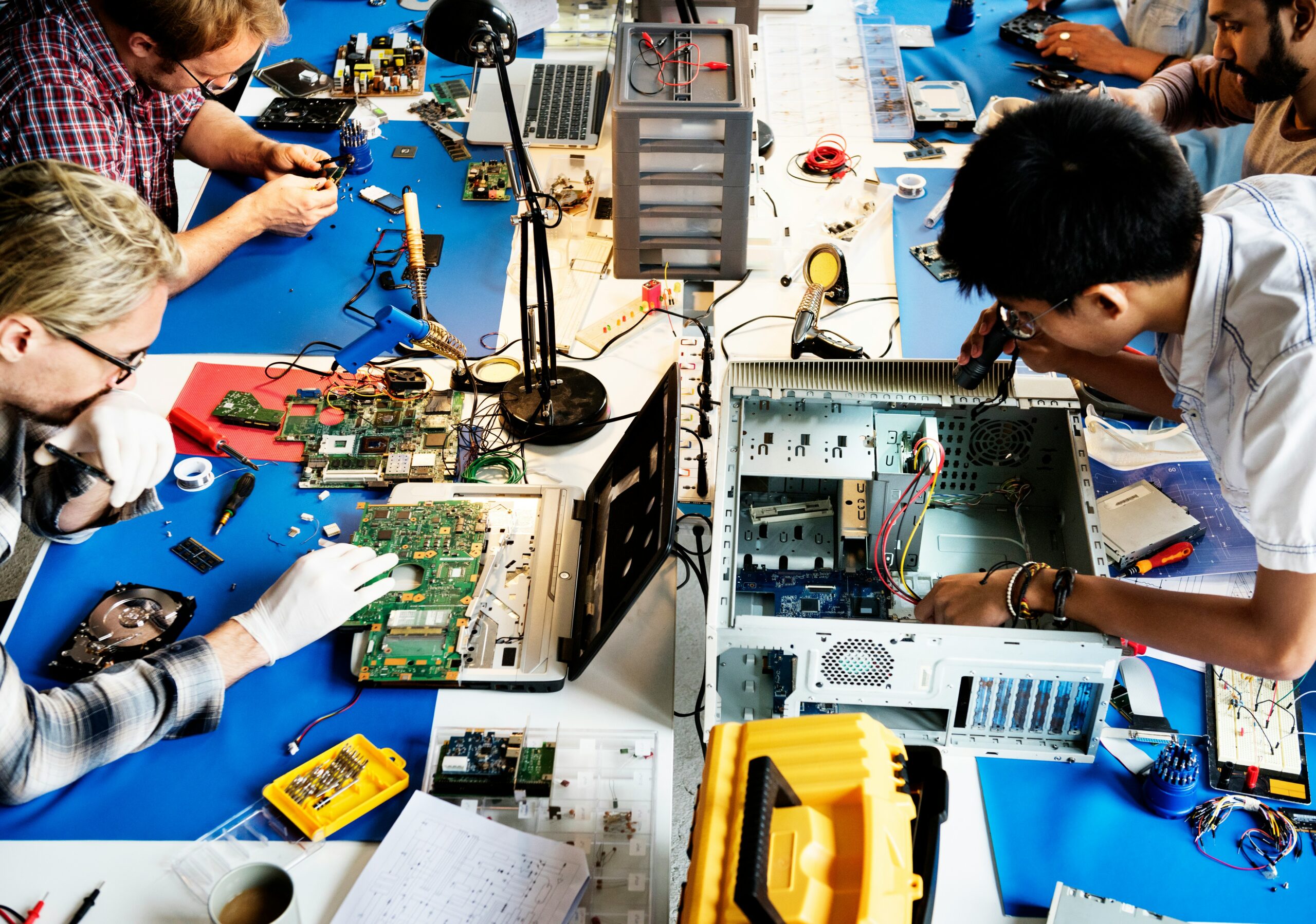
Mechanical engineering provides the core framework for robotics, defining how robots are built, move, and interact with their environment. While robotics combines electronics, software, and AI, the physical components—joints, actuators, frames, and mechanisms—are grounded in mechanical principles.
Mechanical engineers ensure that robots are structurally sound, capable of precise movement, and able to perform tasks reliably and consistently. This foundation is critical for both industrial robots performing repetitive tasks and advanced humanoid robots navigating complex environments.
Structural Design and Material Selection
The design of a robot begins with structural engineering. Engineers determine geometry, weight distribution, and strength to ensure the robot can withstand operational stresses. Material selection is equally important.
Lightweight metals, such as aluminum or titanium, are often used for frames to strike a balance between strength and energy efficiency. Composites and polymers may provide flexibility or insulation.
Mechanical engineers also account for load-bearing requirements, vibration resistance, and durability, which are critical in applications ranging from assembly lines to surgical robots.
Kinematics and Motion Planning
Kinematics, a fundamental principle of mechanical engineering, studies the motion of systems without considering the forces causing them. In robotics, forward kinematics calculates the position of a robot’s end effector based on joint angles, while inverse kinematics determines the joint configurations needed to reach a desired point.
Motion planning integrates kinematics with trajectory optimization. Engineers ensure movements are smooth, energy-efficient, and collision-free. This is crucial for tasks like precise welding, delicate surgery, or agile drone maneuvers. Proper mechanical modeling enables robots to execute these tasks with high accuracy and precision.
Dynamics and Force Analysis
Dynamics examines the forces and torques acting on a robot. Mechanical engineers analyze these factors to ensure stability, efficiency, and safety.
For example, lifting heavy loads requires careful torque and force calculations to prevent mechanical failure. Dynamic analysis also addresses vibrations, resonance, and inertia effects. This ensures robots operate smoothly under varying conditions and maintain precision during high-speed or high-load operations.
Actuation Systems and Mechanisms
Actuators convert energy into motion and are designed using principles of mechanical engineering. Standard actuators include electric motors, hydraulic cylinders, and pneumatic systems. Engineers design linkages, gears, and transmissions to maximize precision, torque, and efficiency.
The choice of mechanism affects a robot’s dexterity and range of motion. Serial linkages and parallel mechanisms determine how robotic arms move, influencing tasks such as assembly, material handling, or surgical procedures. Proper mechanical design ensures that actuators provide accurate and reliable motion.
Integration with Control Systems
Mechanical engineering also underpins the integration of sensors and control systems in robotics. Position, force, and acceleration sensors rely on mechanical structures for accurate measurement.
Engineers use mechanical models to predict system responses, enabling controllers to correct errors and maintain stability. This integration is crucial for advanced robots, such as humanoids or collaborative robots (cobots), which must safely adapt to dynamic environments and interact with humans.
Thermal Management and Energy Efficiency
Robotic components generate heat during operation, which can reduce efficiency or damage parts. Mechanical engineers design cooling solutions, including heat sinks, ventilation systems, and thermally conductive materials. Robotic components generate heat during operation, which can reduce efficiency or damage parts.
Energy efficiency is further enhanced through lightweight structures, low-friction joints, and optimized motion mechanisms. Efficient mechanical design reduces power consumption, extends battery life, and increases the operational lifespan of robotic systems. Robotic components generate heat during operation, which can reduce efficiency or damage parts.
Real-World Applications
Mechanical engineering principles are applied across multiple robotic domains:
Industrial Automation: Robotic arms rely on structural integrity, motion control, and precise actuation for tasks like welding, painting, and assembly.
Medical Robotics: Surgical robots require precise kinematics, force control, and mechanical stability to perform delicate procedures.
Service Robotics: Delivery robots, cleaning systems, and warehouse automation rely on mechanical systems for mobility, stability, and load handling.
Aerospace and Defense: Drones and autonomous vehicles utilize advanced mechanical design for maneuverability, durability, and energy efficiency.
These examples demonstrate how mechanical engineering directly impacts a robot’s functionality, efficiency, and safety.
Future Directions in Mechanical Robotics Design
The robotics field is evolving rapidly, and mechanical engineering continues to drive innovation in this field. Emerging trends include:
Soft Robotics: Flexible materials allow robots to interact with humans and navigate confined spaces safely.
Lightweight and High-Strength Materials: Advanced composites reduce energy use while maintaining structural integrity.
Adaptive Mechanisms: Variable-stiffness joints and reconfigurable linkages increase versatility.
Energy-Efficient Motion: Optimized kinematics and low-friction designs reduce power consumption.
Mechanical engineers play a crucial role in developing these innovations, ensuring that robots meet the future needs of both industry and society.
Mechanical Engineering as the Backbone of Robotics
Mechanical engineering is integral to the design, functionality, and reliability of robots. From structural design and motion planning to actuation, dynamics, and energy efficiency, mechanical principles enable robots to perform complex tasks safely and accurately.
As robotics continues to expand across industries—manufacturing, healthcare, logistics, and aerospace—the synergy between mechanical engineering, electronics, and AI will define the next generation of advanced robotic systems. Mechanical engineering remains the foundation for innovation, powering the robots of today and tomorrow.